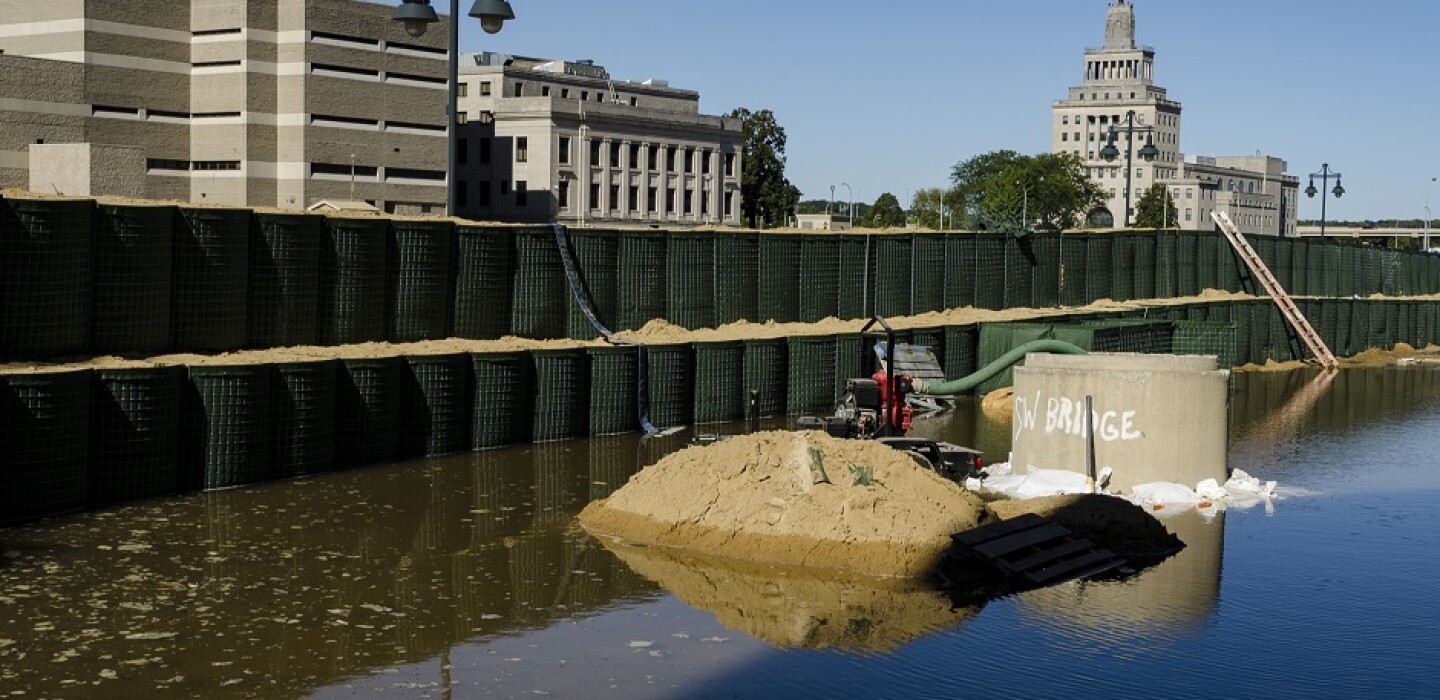
Major Progress on Cedar Rapids’ Intricate Flood Control System
Fifteen years ago, a historic flood devastated Cedar Rapids, Iowa, forcing an estimated 10,000 residents from their homes and doing about $5 billion worth of property and economic damage, including crop damage. Today, the city is about 30 percent finished with its massive flood control system, and the $750 million price tag seems like a bargain.
When it’s complete in about 12 years, the system will include a high wall, floodgates and pump stations that will all blend in with the environment.
So far, residents can be assured that things are progressing with the construction of the 13-foot flood wall that is lined with grassy terraces for events and visitor lounging. Some of the wall will be retractable. The floodgate is designed to open for vehicles to pass through and matches the local bridge railing.
It’s part of the 3.71 miles of flood walls and gates that are planned for the Cedar River within Cedar Rapids and will keep high water out of the city limits. So far, the wall extends for a mile. Make no mistake: Constructing such a huge system isn’t simple.
“Trying to put a flood control system in a developed community for 150-plus years is not an easy task,” said Flood Control Program Manager Rob Davis in an interview with the Cedar Rapids Gazette. “There are a lot of factors you have to consider.”
The flood wall will connect to 3.64 miles of levees throughout the city. The barriers, the flood walls and levee system will be effective at protecting communities from flooding rivers. But the barriers will also trap precipitation that falls on the city side, complicating matters.
That’s where the pump stations will come into play, and these also will be designed to match the aesthetics of the community, including a brick pump station that will match the brick school building that sits in front of it.
But water can also seep through the storm sewer system from below ground. To mitigate that, the city is consolidating the sewer system with fewer outfalls and outfitting it with gates that can be closed during flooding. During a 2016 flood, the city built 12-foot-tall concrete cones and put sandbags around the 48 outfalls.
Instead of outfalls there will be 12 floodgates. “It’s much more reliable,” Davis said.
And because the pump stations won’t completely alleviate the problem they were intended to fix, the city is constructing detention basins as well. The basins will hold stormwater and slow its feeding into the pump stations.
“All of those things allow room for the river to breathe,” Davis said. “From a regulatory standpoint, we can’t just build right at the river banks and then back that water up and cause problems upstream.”


Average Rating